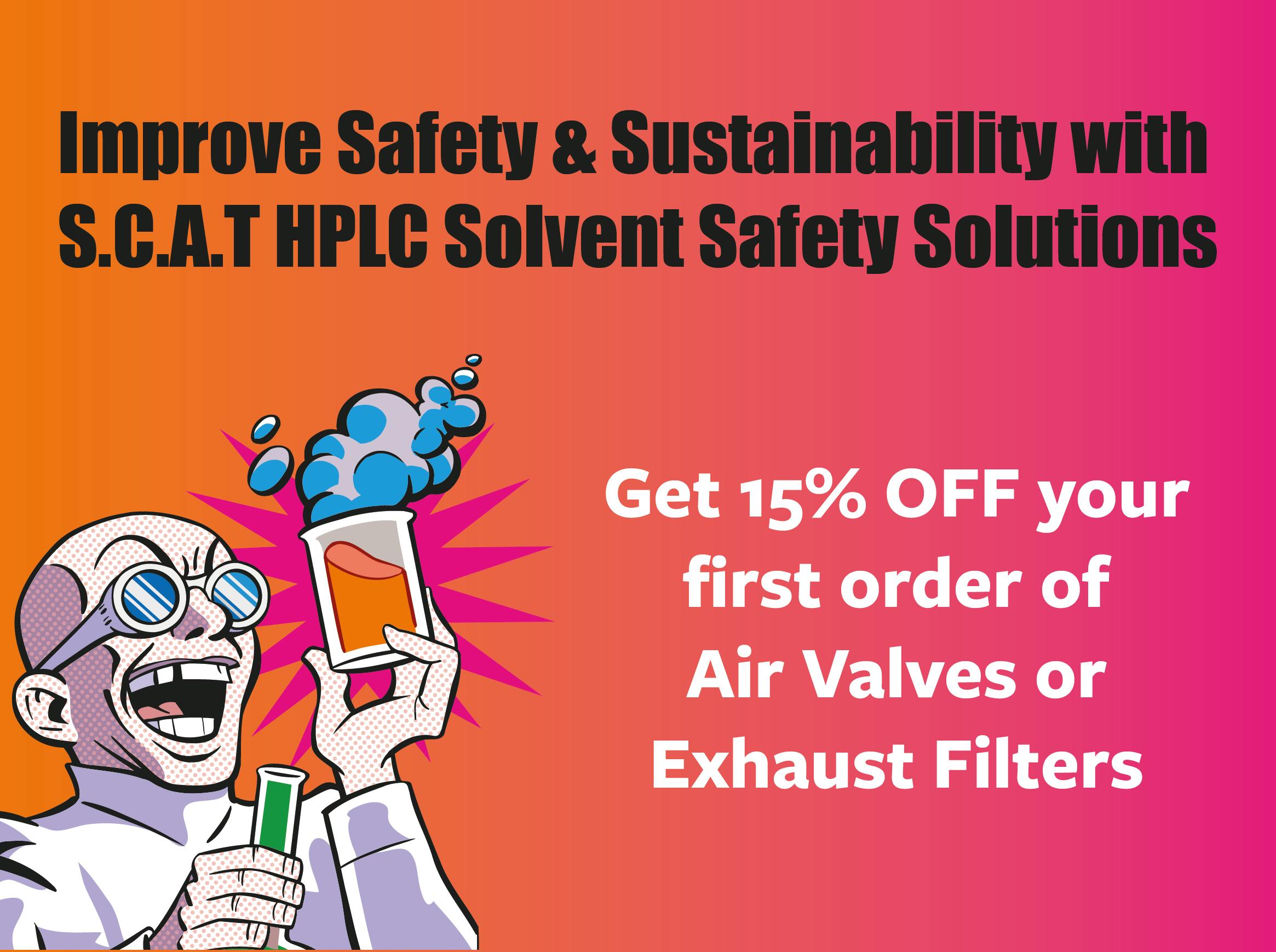
07 Mar 2022
Women in Chromatography Part 2: Alma Levant Hayden & Camilla Liscio
Celebrating International Women's Day
By Victoria McOuat
In the Women in Chromatography series, I take a look at an inspiring woman from the history of chromatographic thought and then interview one of my equally inspirational female colleagues. I started this series on International Day of Women and Girls in Science, celebrating Erika Cremer & our very own Emma Dick. Today's article focuses on the life and amazing achievements of Alma Levant Hayden, the first black, female chemist in the FDA. This is then followed by an interesting and inspirational interview with Camilla Liscio, a principal scientist at our sister company Anatune.
Alma Levant Hayden – first black, female chemist in the FDA
Alma Levant was born 95 years ago at the end of March in Greenville, South Carolina. Although originally planning on becoming a nurse, after graduating with honours from South Carolina State College she went on to gain a master’s degree in chemistry. Like many of us, Alma had been captivated by chemistry later stating she “just didn’t want to part from it” [1].

Alma Levant Hayden performing paper chromatography, National Institutes of Health, 1952 [8]
In 1950s-USA there was federal government expansion, leading to more opportunities for women scientists. There was great variation in representation through different agencies though and of course, the women would rarely rise to higher positions. At the time, women were not welcome in industry positions and had restricted career mobility. Though the pay was lower, these government positions offered an opportunity to pursue their careers in science, along with some benefits, like pensions. The low salaries, and difficulty in attracting and retaining lab workers, prompted the hiring of ethnic minority women scientists where they “would not come into contact with actual patients or clients” in particular within government agencies such as the Food and Drug Administration (FDA) [2]. Alma started her first position in the capital at the National Institutes of Health (NIH) in the 1950s, making her one of the first African-American women working for a science agency in Washington, D.C., going on to join the FDA in the mid-'50s. Just a few years previously (1946) an official from the FDA had commented “there are no coloured scientists employed by the agency”. Given the potential for government scientists to participate in trials, there was hesitancy at the time over how trial outcomes may be impacted by prejudice (in some states) if expert testimony was delivered by people of colour [3,7].
By 1954, just under 12.5% of chemistry scientists employed by the federal government were women, making it one of the largest fields for women in the federal government. Most were based at the National Cancer Institute, which had gained a history of employing women who would become important to science, completing pioneering work in a number of specialities [2]. In her time at the NIH and the FDA, Alma would publish a number of papers on the then newly developed technique, paper chromatography. At the time, the technique had only been around for 8 years. In the headline picture, taken at the NIH in 1952, Alma is demonstrating the use of paper chromatography in identifying steroids [4]. However, it’s for her work in spectrophotometry for which she is most renowned and by 1962, at the age of just 35, she was a leading expert in the country [1]. Despite the barriers at the time against both her gender and race, by 1963 Alma Levant Hayden was chief of the Spectrophotometer Research Branch in the Division of Pharmaceutical Chemistry at the FDA [5].
Throughout her career, Alma was committed to protecting public health, using her expertise to focus on the identification of ineffective “cures”. Following the tragedy related to Thalidomide and the resulting changes to regulations of drug safety, the controversial drug Krebiozen was targeted in order to identify its composition and determine efficacy. This drug was promoted as a cure for cancer and sold at extremely high prices during the 50s and 60s. Led by Alma, a team showed that in fact it contained only creatine monohydrate dissolved in mineral oil, and in some cases mineral oil alone with no discernible active ingredients. This disproved it as an alternative cancer treatment, later leading to a trial of the “inventors” and promoters of Krebiozen, where Alma would testify. Unfortunately, the case ended in acquittal after a 9-month trial due to a hung jury [6].
Tragically, at the age of just 40, Alma Levant Hayden lost her own battle with cancer. Throughout her short life, Alma had a passion for science making contributions to the early days of paper chromatography, thin-layer chromatography and spectrophotometry, along with regulatory science. Always an example of excellence herself a message from Alma to girls, published in 1962 from the report of the world of work conference on career and job opportunities at Howard University, shows her strength of drive “Always try to do the very best, and to be the very best, in whatever group you are working with” [1].
Celebrating Our Colleagues

Dr Camilla Liscio – Principal Scientist – Anatune
What was it that first got you interested in science?
People think it might be made up, but it’s true—I became interested in science against all odds. Let me elaborate. I am Italian and in Italy, you choose your high school education as a reflection of what you are hoping to specialize in next. For instance, you will go to science high school if you want to become a scientist or go to liberal arts high school if you want to become a writer.
As for me, I went to liberal arts high school because at the time I wanted to become an archaeologist. Then something a little bit magical, I would say even serendipitous happened. I was in my third year at high school, and I walked into the classroom to have my very first chemistry class, a big change from all the Latin and Greek done up to that moment. The chemistry teacher walked in, sat down and she started to give us an overview of the program for the year. I had never even heard of the word chemistry before but that did not matter. I fell in love with the subject straight away and that very day was when I decided I was going to be a chemist.
Wow, that must have been some talk she gave! So what has been your biggest achievement or what are you most proud of?
One of the choices in my career I’m the proudest of was moving to a country different from my own. I must say, it’s more than just changing your address. It is about a change of perspective and a change of mindset as well. I moved abroad for my post-doc and that opportunity allowed me to work in a diverse scientific environment and meet people from different backgrounds and with different ways to approach life. That life experience helped me develop versatility and openness and at the same time taught me to look at things from a different perspective. Not only scientifically speaking, but also personally and it certainly does significantly drive the way I approach science nowadays.
Yeah, I think especially in science, that adaptability is really important. You’d mentioned earlier about your first chemistry teacher, what other female role models in STEM did you have growing up?
In STEM, I had excellent teachers, both in high school and at University, so I am sure they have been role models and inspired me. However, if we may extend beyond STEM, my mum has certainly had a big impact on my career - I am a mummy’s girl! She has always pushed me to be independent, she never sugarcoated things for me and, she has always challenged me to understand—even when making a mistake—to understand why and to grow from that. I think I have to thank her for that aspect of endurance and adaptability of my character, and for teaching me not to take things for granted but for making me appreciate them and work for them.
Do you think things have changed for women in STEM since your career began and if so how?
Yes! I have actually a funny story to tell about this. A bit of background: I attended University in Italy which is still a very male-driven country in many fields and there is still a big difference in salary between men and women. During my first year at university, I clearly remember one professor who would make life impossible for all the females, even saying “why are you doing here, you should go home and knit”—not very politically correct! I’m sure now the situation is very different, we are talking nearly twenty years ago!
It's great to hear the changes you’re noticing, hopefully together with modern networking opportunities, progress will move even faster. So, what advice would you give to young girls wanting to pursue a career in STEM?
Don’t let anyone make you believe that you can’t achieve what you want to achieve. Even when things get tough, keep going!
Finally, we have a question from one of our budding scientists, Beatrice, aged 9: What is the hardest thing you’ve ever done as a scientist?
I think for me it must have been my first year at University. You see, as I mentioned, in high school I only did the basics of science, some chemistry, mathematics and very little physics. First-year at Uni turned out to be very hard as in order to pass it, I had to pass two big maths and physics exams. In my first attempts at those I failed, I received a very low score. I remember wondering whether I made the wrong choice and I was not up for the task. My mum talked me out of that thinking. She told me not to let that failure define me, she prompted me to study more and keep going. I was lucky as I had some really good friends who had joined from the scientific high school and therefore had a much stronger background. I have to thank them. They would sit with me and help me out with extra study to catch up. I had to study double or three times more than the other students but in the end, on the final exam, I got really high marks and I was very proud of it. It was very hard, especially because I was so young and it would have been so easy to drop out and accept that I had made the wrong choice. But I didn’t give up. I really must thank my mum for that and all her encouragement. It was a great life lesson: everything which is hard is usually an extraordinary learning opportunity.
That’s a great note to end on. Thank you so much for your time!
References
1 Report of the world of work conference on career and job opportunities Howard University, Washington, D.C. July 27-28, 1962 https://babel.hathitrust.org/cgi/pt?id=uiug.30112079572084&view=2up&seq=1&size=125&q1=hayden
2 Women Scientists in America, Volume 2: Before Affirmative Action 1940-1972 by Margaret W Rossiter
3 E. Katcher, memo on interview with Mrs. Boardman of FDA, Dec 9, 1946, box 110, WB Papers
5 Thomas G Alexander, “Alma Levant Hayden”, Journal of the Association of Analytical Chemists 50 (1967): 1381; AMS,11th ed. P&B 1966, 3:2179
6 https://quackwatch.org/related/Cancer/krebiozen/
8https://en.wikipedia.org/wiki/Alma_Levant_Hayden#/media/File:Alma_Levant_Hayden_(cropped).jpg –





